When you’re struggling with bed bugs, you’re willing to try just about anything to get rid of them. If you’ve searched for home remedies to kill bed bugs yourself, you’ve probably been pointed toward diatomaceous earth, a popular natural remedy for treating all types of pests. Most people recommending it have never tested it with bed bugs specifically, though.
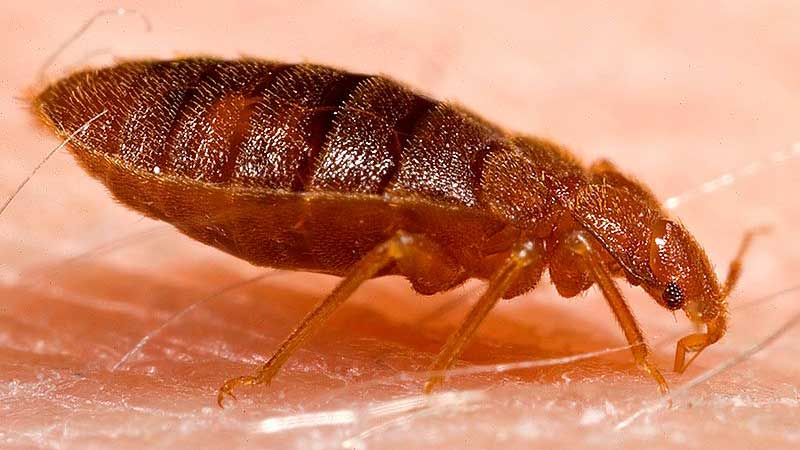
The short answer is while Diatomaceous Earth may be effective against some insects, it’s simply not worth using against bed bugs, a highly resistant and adaptable pest that spreads quickly. Diatomaceous earth does kill bed bugs but there’s something even better you should be using for about the same price.
Diatomaceous Earth is Not The Best Choice for Killing Bed Bugs
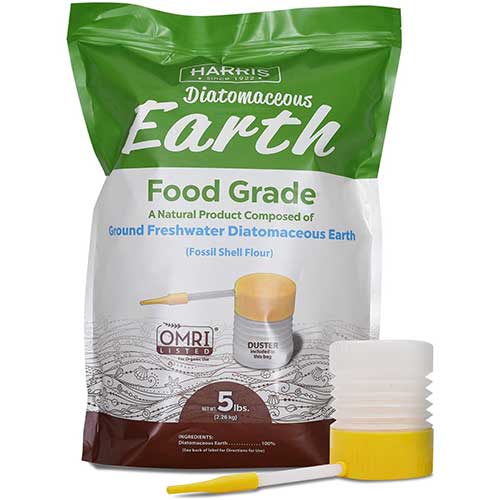
Bed bugs are notoriously difficult to kill. These bugs, once all but eradicated in the United States, have made a huge resurgence. They’ve also evolved to become resistant to most pesticides on the market.
According to a study of the bed bug’s genome based on populations in the Cincinnati area — one of the hardest-hit regions in the U.S. — bed bugs have 14 genes that help them shrug off pyrethroid-based insecticides that once killed them easily.
Most of these genes are active in the bed bug’s cuticle or exoskeleton. These genes help slow or block insecticides from reaching the bed bug’s nervous system. If pesticides do slip past, other genes prevent the toxins from interfering with the nervous system. Bed bugs have been found to develop resistance to lethal doses of pesticides within a year or a few generations.
Diatomaceous earth seems like it would be a great way around this defense. In other insects, the abrasive texture of DE makes tiny cuts in the waxy outer layer of the exoskeleton which allows moisture to escape the insect’s body. Disrupting this balance of fluid kills the insect through desiccation.
Bed bugs, unfortunately, have a high resistance to desiccation. When bed bugs are in your home, they also have a nearby source of fluid: your blood. If you live in an area with high humidity, it will be even harder to kill bed bugs with desiccation.
That doesn’t mean you should give up hope, however. There’s an alternative to diatomaceous earth that’s actually highly effective against bed bugs, just as affordable, and made from essentially the same thing.
What Is Diatomaceous Earth?
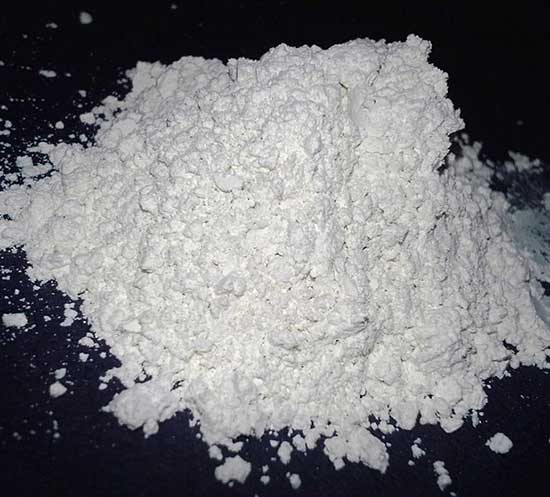
Diatomaceous earth (DE) is a soft, naturally occurring sedimentary rock that crumbles into a fine talc-like powder. It’s formed from fossilized remains of algae or diatoms.
DE gets a lot of attention in home pest control — especially natural pest control — because it’s very abrasive and strips the lipid layer from the exoskeletons of insects. This causes desiccation or dehydration which kills the insect.
While that’s great for most insects, the truth is diatomaceous earth simply doesn’t work well against bed bugs which are resistant to desiccation (dehydration) and replenish their bodily fluids easily by feeding.
Silica Gel: The Best Bed Bug Killer
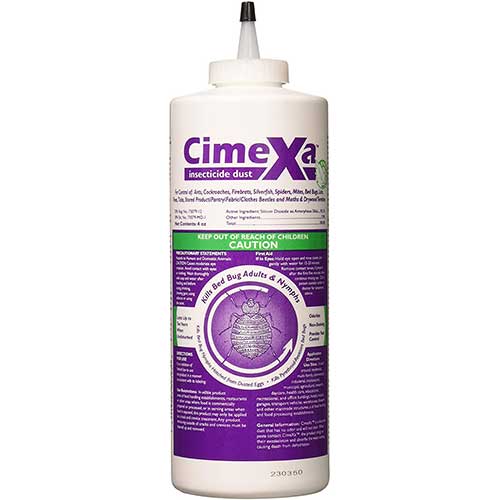
Silica gel, like diatomaceous earth, is made from silicon dioxide but it’s made synthetically from sand. Both diatomaceous earth and silica gel are desiccants but they differ a great deal in terms of efficacy.
Are you familiar with those tiny packets of silica gel you find in packaging for clothing and electronics? That’s silica gel. This drying agent works differently than diatomaceous earth because it doesn’t just cause abrasion: it actively pulls out moisture. That’s why it’s included in the packaging to remove any moisture from clothing, electronics, and other moisture-sensitive items.
While DE only removes the waxy coating on the bed bug’s cuticle to make it hard to retain moisture, silica gel is also an absorbent. It doesn’t wait around while the bed bug dries out — or grabs a meal to replenish fluids. It actively speeds up the drying process by sucking moisture out of the bed bug’s body.
Like diatomaceous earth, silica gel is non-toxic. Essentially, it’s ground quartz or sand. While it’s generally safe for humans and pets, it’s still a good idea to be careful when applying it to avoid inhaling the dust.
Rather than using diatomaceous earth, you’ll have better results by using a silica gel product like Harris Bed Bug Killer Silica Powder or CimeXa insecticide dust. Here’s why.
After being disappointed by trials with DE against bed bugs, researchers at the University of Kentucky were excited to see the efficacy of silica gel. The researchers studied CimeXa insecticide dust, a formulation made from 100% amorphous silica gel without other additives or pyrethrins, in a series of experiments.
Here’s how effective it was.
Silica Gel Lab Effectiveness Results
In a lab setting, all bed bugs were killed within 24 to 48 hours after exposure to a barely visible amount of silica gel dust. Even highly pesticide-resistant bed bugs were killed. CimeXa was compared to Temprid SC, an insecticide, which did not kill any highly resistant bed bugs after 7 days of continuous exposure and killed just 45-70% of moderately resistant bugs.
Silica Gel Applied on Carpet
In a second test, researchers evaluated how effective silica gel would be when applied to the carpet. The results were compared with the diatomaceous earth. Both silica gel and DE were applied with a hand duster for a uniform application. Within 24 hours, 97.5% of the bed bugs were killed after exposure to silica gel dusted carpet compared to just 10% exposed to diatomaceous earth. When the experiment was repeated with the smallest possible amount of silica gel dust, 100% of bed bugs were killed within a day.
Silica Gel in a Real-World Infested Apartment
Finally, the researchers tried silica gel in a real-world environment. 6 apartment units were treated with only CimeXa dust and 4 were treated with CimeXa mixed with water. In both cases, the application was thorough. Property managers and tenants were advised not to self-treat the bed bugs, launder bedding, or dispose of infested materials. No encasements were installed on the mattresses.
After one week, there was an 82.3% reduction in bed bugs. By the final evaluation, there were 98.1% fewer bed bugs.
When silica gel was applied as a solution with water, the average bed bug reduction was just 35%.
Diatomaceous Earth Can’t Compare
When the same real-world experiment was performed with diatomaceous earth, the results were far from positive. The average apartment had no significant change in bed bug population after diatomaceous earth treatment. The only good DE seemed to provide is it seemed to prevent the population from growing.
The researchers were even surprised that diatomaceous earth did nothing to reduce bed bug populations considering how thoroughly it was applied. During later inspections, researchers even found many bed bugs that clearly had DE dust on their exoskeleton proving they were exposed — just not killed. Previous studies have shown that DE can kill bed bugs but this only works in laboratory settings. Even then, it takes a while: diatomaceous killed just 10% of bed bugs after 24 hours of continuous exposure while silica gel killed up to 100%.
The effects of diatomaceous earth are significantly reduced by short exposure to treated areas as the bugs would encounter in the real world.
Silica Gel Should Be Your First Line of Defense
When you’re dealing with bed bugs, you don’t have time to try out an ineffective product. Does diatomaceous earth kill bed bugs? Yes. But very slowly and most bed bugs will survive it. Silica gel is by far the more potent bed bug killer. Research does indicate that some populations have the same tolerance for CimeXa but not enough to survive much longer than their more vulnerable counterparts.
How to Use a Bed Bug Powder
Want to see this level of results at home? There’s a right way and a wrong way to use silica gel bed bug powder. Here’s what you need to know.
Apply Dry Bed Bug Powder
On many bed bug products containing silica gel, you may see instructions with the option to apply the powder dry or in an aqueous solution. That means you can mix it with water and spray the solution onto surfaces you want to treat. For example, CimeXa recommends mixing 16 ounces of the silica powder per gallon of water.
A liquid spray is definitely faster and easier to apply — but far less effective.
According to silica gel research on bed bug treatment, silica gel applied with water only reduces bed bug populations by an average of 35% after one or two weeks. If it isn’t reapplied, you may even see an increase in the bed bug population because it won’t do much to stop reproduction. When applied as a dry powder, silica gel kills 82% of bed bugs in a week and 98% after five weeks.
Applying silica gel as an aqueous solution just isn’t the best option. Along with being less effective, it leaves white deposits on surfaces. It also makes it difficult to apply the powder evenly.
Getting the gel wet probably damages its absorptive and abrasive properties. After all, you want the powder to absorb liquids from the bed bugs’ bodies. If it’s already wet, it can’t do that very well.
Use a Brush and Duster to Apply Silica Gel
You don’t need to go crazy and apply a huge amount of silica gel around your home. As the study above showed, even a very tiny amount of silica powder is enough — as long as the bed bugs crawl over it. You should focus more on even application rather than the amount you apply.
The best way to apply silica powder is with a combination of tools like a brush and the powder duster or puffer tip that came with the powder. In the study, researchers used a powder duster to apply the powder to tiny nooks and crannies and cosmetic brushes and soft paint brushes for larger or smooth surfaces.
You can use the duster to apply the powder to hard-to-reach areas, avoids, and cracks. This includes behind lightswitch covers and baseboards. Brushes are helpful for flat or smooth surfaces to avoid blow-back and drift that happens when you puff the dry powder onto a surface.
Next, we’ll go over the areas on which you need to focus.
Don’t Miss Any Spots!
Bed bugs are very tiny and very flat. That makes them adept at hiding virtually anywhere when they aren’t feasting. If a crack is large enough to force a credit card into, it’s large enough for an adult bed bug.
While you don’t want to cover every surface in your home, you should be thorough to get bed bugs where they’re hiding and when they’re crawling toward your bed. As you apply the powder, remember that bed bugs can’t fly: they crawl very well to reach you and their hiding spots.
Here are the most important areas to treat:
- Baseboards
- Flooring transitions
- Electrical outlets
- Air conditioning registers
- Behind picture frames
- Interior areas, drawers, and joints of furniture (be sure to look under the furniture too!)
- Door and window frames
- Headboard
You should absolutely apply the silica powder to your flooring as well. Focus on the bedroom and make sure you have a good perimeter around your bed, around your nightstand, and across the doorway to your room and your closet. This ensures bed bugs are exposed to the silica gel when they leave the closet, enter your bedroom, or try to get to the bed.
Related Article: 8 Best Bug Bed Killers
Don’t Use Silica Gel Alone
Your work isn’t done once you’ve applied silica gel around your bedroom. While its efficacy may be encouraging, you shouldn’t use it alone to solve a bed bug problem. These other steps will help you get rid of bed bugs for good.
Mattress Encasement to Protect From Bed Bugs
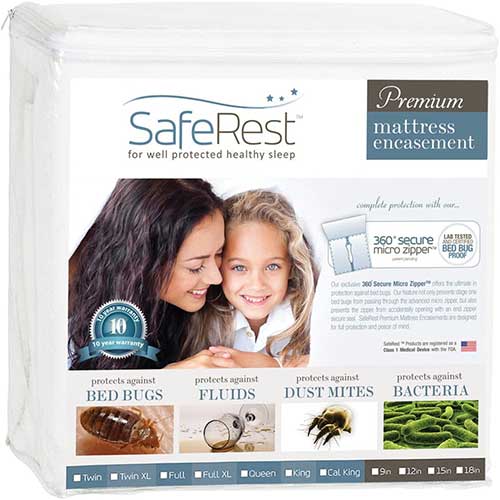
A mattress encasement won’t stop bed bugs from biting you where you sleep but it does prevent your bed from becoming infested — or sealing away bed bugs that may already be in the mattress. A quality bed bug mattress encasement completely stops bed bugs from moving into or out of the mattress. Any nymphs or bugs in the mattress will not be able to get out.
When choosing a mattress encasement, make sure it’s designed for bed bugs which are tiny and capable of escaping the typical mattress cover. The encasement should be bite-proof with a fine-tooth zipper and a flap to seal the end of the zipper.
Once you cover your mattress, be prepared to leave the encasement on for at least 12 months. Adult bed bugs can live for 300 to 485 days in laboratory settings with no food in ideal conditions. Fortunately, your mattress doesn’t have ideal conditions because temperature affects how long bed bugs can survive without feeding. Bed bugs survive the longest in colder temperatures. With a temperature of around 80 degrees F, adults typically survive just 40-90 days. Still, it’s good to be on the safe side and leave the encasement in place.
Interceptors to Catch Bed Bugs
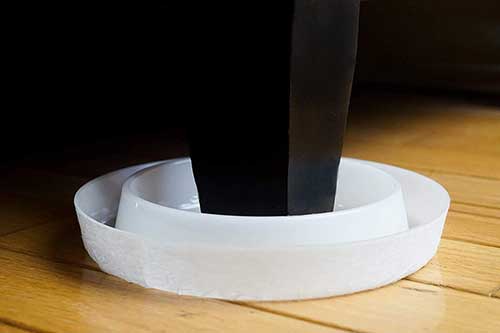
Interceptors are basically traps that catch bed bugs as they climb up the legs of your bed frame. These Traps are not designed to kill the bugs or stop an infestation. Instead, they are helpful for confirming you actually have bed bugs and creating another line of defense around your bed.
Interceptors are basically cups that go under your bed posts with a moat that traps the bed bugs as they try to climb. Despite being great at crawling, bed bugs can’t climb well, especially on a slippery vertical surface.
ClimbUp bed bug interceptors are a low-cost solution to give you some peace of mind and help you verify whether your bed bug extermination methods are working. This type of interceptor is a good choice because it has a two-wall design. Depending on where the bugs are stuck, you can tell whether they were crawling to the bed or away from the bed.
When the trap does catch bed bugs, dump them in soapy, hot water then reuse the interceptors.
Vacuum up Bed Bugs
Simple vacuuming is an easy yet effective way to remove eggs and bed bug nymphs from surfaces you can’t easily treat or wash. You should use a fairly powerful vacuum that can dislodge nymphs and eggs hiding in your carpet, mattress seams, drawers, and baseboards.
When vacuuming, begin with the mattress. Scrub the seams, tag, stitching, and crevices with a stiff brush to loosen bugs and eggs. Use the vacuum’s crevice attachment to carefully vacuum your entire mattress giving any nooks and seams extra attention.
Next, use the vacuum to go along the surfaces, crevices, and edges of your headboard and box springs. Don’t forget to vacuum the base of your bed and the floor underneath the bed. Slowly move outward from the bed to vacuum around baseboards, under and inside of your nightstand, and any other nooks. As you work away from the bed, slowly vacuum the entire floor and along the baseboards.
After vacuuming, remove and seal the vacuum bag to contain any eggs or bed bugs you may have picked up. Dispose of the used vacuum bag in a sealed plastic bag outside of your home.
Wash and Dry Bedding & Clothing
If you have bed bugs, they’re probably hiding in the worst places. Aside from the bed, there’s a good chance you have bed bugs, nymphs, and/or eggs hiding in your clothing. You don’t want to end up like the Oklahoma attorney who showed up to court with bed bugs crawling over his neck and coat. You also want to kill the bugs everywhere they’re hiding, all at once.
Remove and wash your bedding, clothing, and any fabrics in your bedrooms like curtains and spare blankets. To avoid re-contaminating your bedroom or spreading the bed bugs to other areas of your home, sort the clothing in your bedroom and place it into disposable, sealable trash bags. Seal the bags to be sure the bed bugs can’t escape then tip directly into the washing machine.
Wash and dry fabrics on the highest heat setting possible. Heat is the most effective bed bug killer. Adults, eggs, and nymphs will all be killed after 30 minutes through the dryer.
When your items are dry, place them in brand new, sealed plastic bags. Keep the clothing and bedding sealed until you take other steps to sanitize your bedroom or you will have to start over.
Use Heat Treatment for Bed Bugs
Bed bugs are resistant to cold, pesticides, diatomaceous earth, and most natural methods that work on other insects. Their greatest weakness is heat — but it has to be hot enough. You can’t just turn up your thermostat or leave infested items in the hot sun and hope for the best.
It takes at least 20 minutes at a constant 119 degrees F to kill adult bed bugs. Eggs are more heat-resistant and need a temperature of 125 degrees F for 20 minutes.
Heat is so effective, it’s the preferred method for professional bed bug treatment. While you don’t have commercial-grade technology at your disposal, you can still use heat to eradicate bed bugs in your home.
One method is using a heat chamber but these tend to cost hundreds of dollars. A heat chamber is really overkill as long as you have a clothes dryer.
Dryers and Solar Bags for Bed Bugs
Whenever possible, treat items in your clothes dryer on the highest setting for at least 30 minutes. This works with shoes, toys, and anything that can’t be washed.
For larger items, you can’t put in the dryer, use the solar bagging strategy. This involves placing items in sealed black, plastic bags and leaving them in direct sunlight on very warm days. This process heats the contents of the bag by up to 40-70 degrees above the outside temperature. This strategy is used in museums around the world to treat sensitive items as well as developing countries without access to more sophisticated methods.
If you use solar bagging, make sure it’s at least 80 degrees or more outside. Leave the sealed plastic bag in direct sunlight all day then rotate it and repeat the next day to guarantee results.
You can also use steam cleaning to kill bed bugs. The only problem with this method is you aren’t applying sustained heat to the bed bugs, nymphs, and eggs for an extended period of time, assuming the steam is hot enough. Still, it can lure bed bugs out of hiding places like baseboards and cracks. It can also be good for treating some items that you can heat throughout like curtains.
Related Article: Best Bed Bug Killer Sprays
My name is Blane and I’m a life-long resident of Southeastern Louisiana. I’ve been working as Pest Control Technician and Inspector for about 1.5 years now.
I’ve worked in many other industries as well, including consulting, managing, as well as at the ground level in fields including Food Service, Corporate Automotive sales, and finance. Whether it be providing counsel, content, or hands-on support; my goal remains to add value to the lives of the people I serve.
If you have any questions regarding pest control, leave them below. I would be happy to help you out in any way I can.

Hi Blane, At the end of June 2021, I helped a handicapped friend who was in a bedbug-infested apartment. I had never been inside it. It was so bad she went to the hospital, where she was diagnosed with anemia. Since she was a senior citizen, adult protective services were called and they found her temporary housing elsewhere. I helped her find a new apartment. We went to her old apartment to see if anything could be saved. I had ordered protective suits from Amazon and disposable footies, which we put on before entering. We stripped these off when we left the apartment to minimize the chance of transporting any of the boogers in the car. It was a pretty bad infestation. I told my friend, that she would have to hire a company to dispose of everything, as I felt it was way over our heads. It cost $1000 to completely clean out her small studio apartment. I know this was devastating for her, to lose everything like that. She had 2 smaller end tables that had been in her family for years that I wanted to try and save for her. I triple bagged those 2 end tables, after sprinkling a lot of diatomaceous earth in the bag and sealing them with zip ties. I brought them to my house but left them outside, all this time. I live in NE Ohio. So, since the end of June 2021, the end tables have been set outside. I figured with the heat from the sun and our Ohio freezing winters, this would kill the bedbugs. What are your thoughts on when it should be safe to open the bags? I want to strip the tables down, refinish them, and give them back to my friend so she has something of her family’s heirlooms. Thanks for your advice!